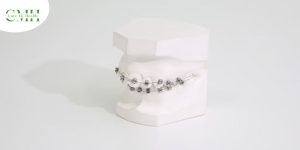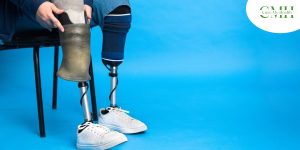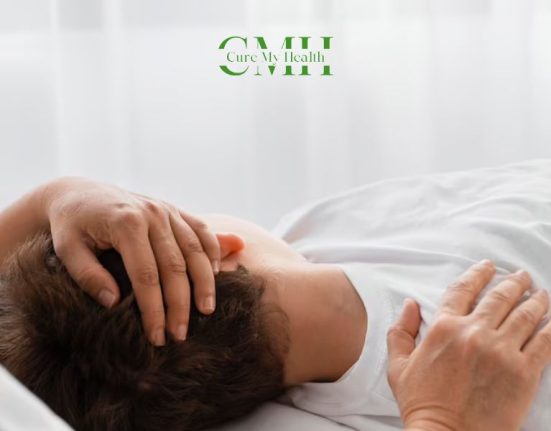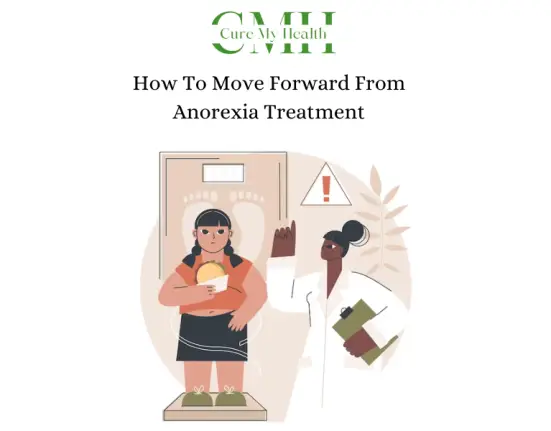You must have surely heard about Leprosy. Leprosy, also known as Hansen’s disease, is a chronic infectious disease caused by the bacteria Mycobacterium leprae. The disease primarily affects the skin, peripheral nerves, mucosa of the upper respiratory tract, and eyes.
Leprosy is transmitted through prolonged and close contact with an infected person who has untreated leprosy. It is not highly infectious and is not easily spread by casual contact. It is also not hereditary.
The symptoms of leprosy vary depending on the type of leprosy and the stage of the disease. Symptoms may include skin lesions, numbness or loss of sensation in the hands and feet, muscle weakness, and deformities of the skin and bones. If left untreated, leprosy can lead to permanent nerve damage, loss of sensation, and disability.
The symptoms of leprosy are:
- Skin lesions: Leprosy typically begins with skin lesions that may appear as light-colored patches, red bumps, or nodules. These lesions may be numb or have reduced sensation, and can be accompanied by a loss of hair or sweat glands.
- Nerve damage: Leprosy can cause nerve damage that can result in loss of sensation or muscle weakness in the hands, feet, and face. This can lead to injuries or burns that go unnoticed and can become infected.
- Thickened nerves: In some cases, leprosy can cause thickened nerves, particularly in the hands and feet, that can be visible and palpable.
- Eye damage: Leprosy can affect the nerves that control eye movement, leading to vision problems or even blindness.
- Nose and throat symptoms: In some cases, leprosy can cause symptoms in the nose and throat, such as stuffiness, nosebleeds, or voice changes.
- Weakness and fatigue: Leprosy can cause general weakness, fatigue, and a feeling of malaise.
- Muscle and joint pain: Some individuals with leprosy may experience muscle and joint pain, particularly in the hands and feet

Physiotherapy – What is it?
Physiotherapy, well known as physical therapy, is a branch of healthcare that involves the treatment and prevention of physical disabilities, injuries, and diseases through the use of exercise, manual therapy, and other techniques.
The goal of physiotherapy is to help individuals achieve their maximum physical potential, function, and quality of life by addressing problems related to movement, posture, and physical function. Physiotherapy can be used to treat a wide range of conditions such as sports injuries, chronic pain, neurological disorders, respiratory and cardiovascular conditions, and musculoskeletal problems.
Physiotherapy treatment may involve a combination of different techniques such as exercise programs, joint mobilization and manipulation, massage, heat or cold therapy, electrotherapy, and education on proper body mechanics and posture. The treatment plan is tailored to the individual’s specific needs and goals.
Physiotherapy for the treatment of Leprosy
Yes, you read it right. Physiotherapy is used for the treatment of deadly diseases like Leprosy. An important factor to consider is that physiotherapy does not aid in curing leprosy. In fact, physiotherapy reduces complications, deformities, disabilities in the body and promotes functional independence.
Some of the goals of physiotherapy for the treatment of Leprosy are:
- Prevention of deformities: Physiotherapy aims to prevent or minimize the development of deformities that may occur as a result of nerve damage, muscle weakness, or joint stiffness.
- Pain management: Physiotherapy can help reduce pain associated with leprosy by using modalities such as heat or cold therapy, massage, or exercise.
- Improvement of mobility: Physiotherapy can help improve mobility by using exercises and stretches to increase range of motion and improve muscle strength and flexibility.
- Restoration of function: Physiotherapy can help individuals with leprosy regain functional abilities such as walking, using their hands, or performing daily activities.
- Education and self-management: Physiotherapy also aims to educate individuals with leprosy about their condition and how to manage it on a day-to-day basis, including self-care strategies, exercise programs, and assistive devices that may be helpful.

Physiotherapy for leprosy may include:
EXERCISE PROGRAMS :
Exercise can help maintain joint mobility, muscle strength, and endurance. A physiotherapist can design an individualized exercise program to suit the needs of the patient.
Some of the specific exercises that can be used are:
- Strength training exercises
Strength training exercises can help improve muscle strength which can be beneficial for individuals with leprosy who may experience muscle weakness or atrophy.Examples of strengthening exercises may include resistance band exercises, bodyweight exercises, or weightlifting.

- Sensory Re-education
Leprosy can result in the occurrence of nerve damage, leading to loss of sensation. The loss of sensation makes it difficult for individuals to perform daily tasks and makes them more prone to injuries and infections. Sensory re-education involves exercises to retrain the brain to interpret and respond to sensory information.
The process of sensory reeducation involves a range of exercises and techniques aimed at stimulating the affected nerves and helping the brain to interpret the sensory input correctly. These exercises may include the use of textures, temperatures, and vibrations to stimulate the nerves and retrain the brain.
- Motion exercises
Leprosy can cause joint stiffness, limiting movement. Range of motion exercises help maintain joint mobility and flexibility.

SKIN CARE
Leprosy can cause skin damage and ulcers. Physiotherapists can provide education on proper skin care to prevent skin breakdown and promote wound healing.
Some of the skincare tips are:
- Keep the skin clean:
This is the foremost tip to prevent skin damage. Regular bathing with mild soap and water can help to keep the skin clean and reduce the risk of infection. It is important to avoid using harsh soaps or scrubbing the skin too vigorously, as this can cause further damage. Look out for mild soaps or body gels
- Avoid exposure to extreme temperatures:
Individuals with leprosy may have reduced sensation in the affected areas, making them more susceptible to burns and frostbite. It is important to avoid exposure to extreme temperatures and to protect the skin from the sun and cold weather.
- Moisturize the skin:
Moisturizing the skin can help to prevent dryness and cracking, which can lead to infections. A mild, fragrance-free moisturizer can be used to keep the skin hydrated and healthy
- Check the skin regularly:
Individuals with leprosy should check their skin regularly for signs of infection or new skin lesions. Any changes should be reported to a healthcare professional.
- Wear protective clothing:
Individuals with leprosy should wear protective clothing, such as long-sleeved shirts and pants, to protect the skin from injury and infection
ASSISTIVE DEVICES:Leprosy can lead to the loss of sensation and muscle weakness in the affected areas, making it difficult for individuals to perform daily tasks and reducing their mobility. In such situations the use of assistive devices may help the individual to gain independence.

Some of the assistive devices that can be used are:
- Orthotics: Orthotic devices, such as braces, splints, or shoe inserts, can be used to support and stabilize the affected areas and improve mobility.
- Prosthetics: Prosthetic devices, such as artificial limbs, can be used to replace lost limbs or improve mobility in the affected areas.
- Mobility aids: Mobility aids, such as canes, walkers, or wheelchairs, can help individuals with leprosy maintain their balance and improve their ability to move around.
- Adaptive devices: Adaptive devices, such as utensils with larger handles or specialized tools for daily tasks, can help individuals with leprosy perform daily tasks more easily.
- Sensory aids: Sensory aids, such as hearing aids or magnifying glasses, can help individuals with leprosy compensate for any loss of sensation or vision.

EDUCATION
Physiotherapists can provide education on proper body mechanics, posture, and activities of daily living to help prevent further disability and promote function.
Disadvantages of physiotherapy for leprosy treatment
Although, it has been said that physiotherapy helps in the treatment of Leprosy, there are certain disadvantages to that. Some of those are mentioned below:
- Sensory deficits: Leprosy can cause damage to the nerves, leading to loss of sensation. This can make it difficult for individuals with leprosy to feel pain or discomfort during physiotherapy, which can increase the risk of injury or aggravation of existing damage.
- Muscle weakness: Leprosy can cause muscle weakness and atrophy, which can make it difficult to perform certain exercises or movements during physiotherapy.
- Skin damage: Individuals with leprosy may have skin lesions or ulcers, which can become aggravated during physiotherapy. This can lead to further skin damage or infection.
- Stigma: In some cultures, there is still a significant stigma attached to leprosy. Individuals with leprosy may feel embarrassed or ashamed to attend physiotherapy sessions, which can impact their willingness to participate and the effectiveness of the treatment.
- Limited resources: In some areas, resources for physiotherapy may be limited or not available at all. This can make it difficult for individuals with leprosy to access the care they need to manage their condition.














